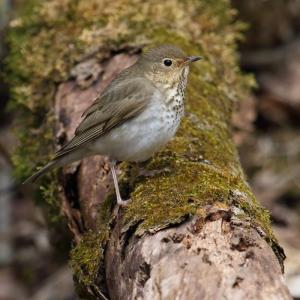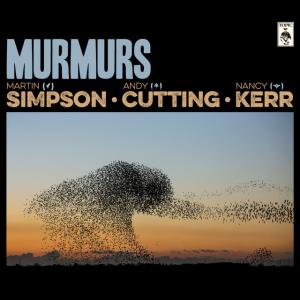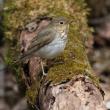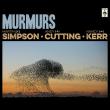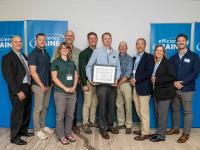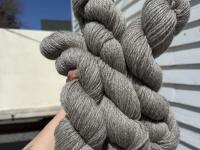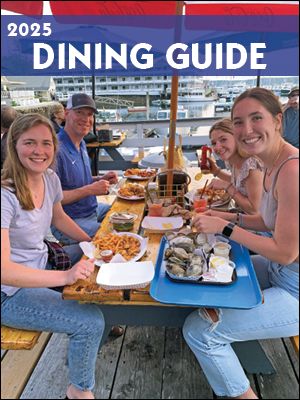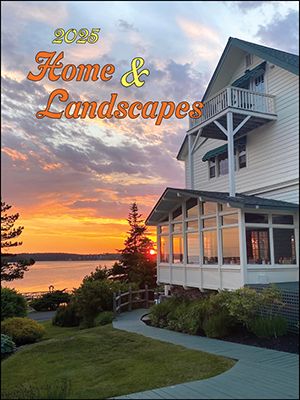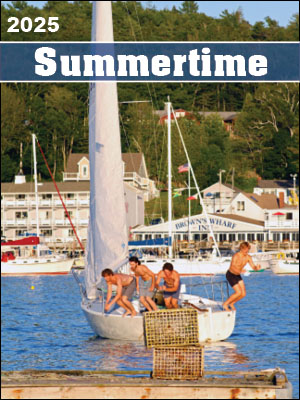'Dark Swift and Bright Swallow': Memories of Birds, Music and Ithaca
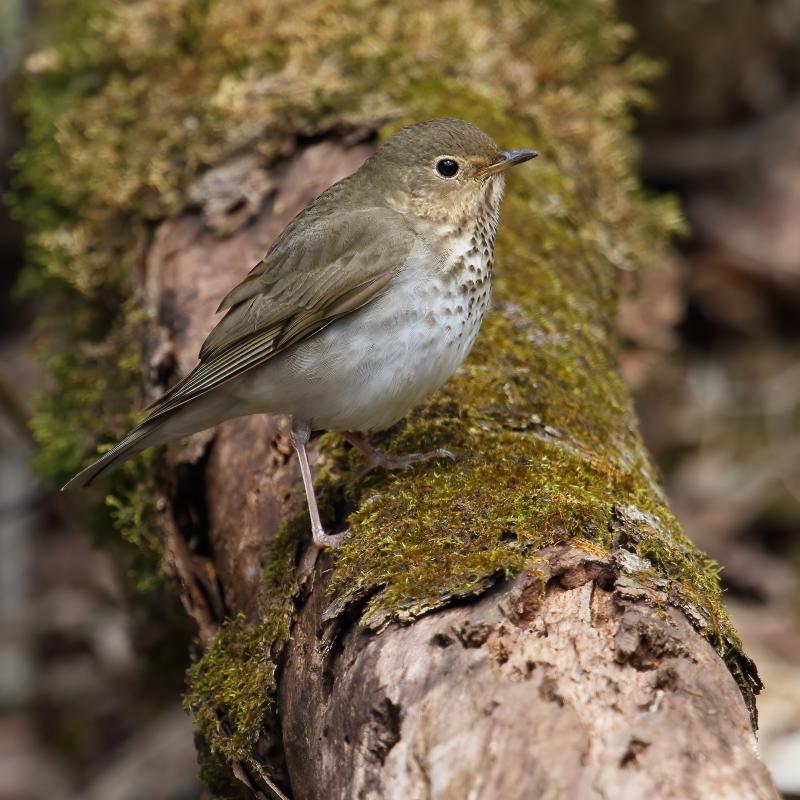 The spring peeper-like song of Swainson's thrush migrating overhead at night are a signature sound of fall in Maine. Photo by Cephas, courtesy of wikimedia commons
The spring peeper-like song of Swainson's thrush migrating overhead at night are a signature sound of fall in Maine. Photo by Cephas, courtesy of wikimedia commons
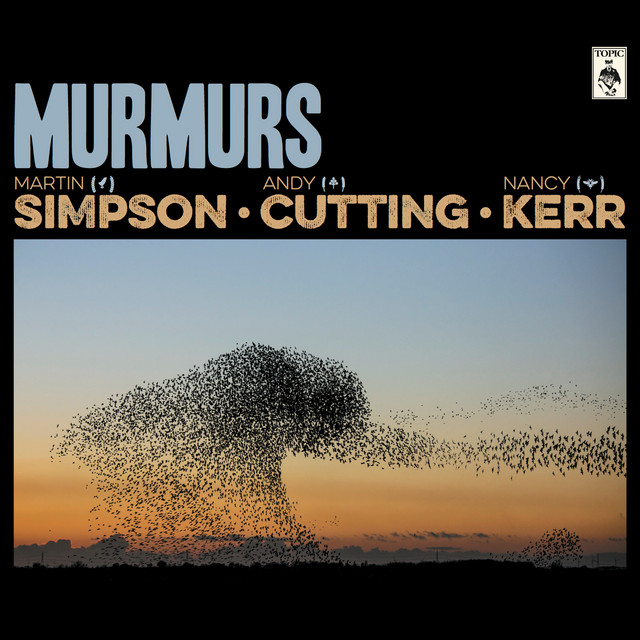 The authors recently discovered that one of their favorite musicians during their time in Ithaca, New York, is also a birder. Music legend Martin Simpson's song "Dark Swift and Bright Swallow" appears on his album, Murmurs, which depicts a murmuration of starlings on its cover.
The authors recently discovered that one of their favorite musicians during their time in Ithaca, New York, is also a birder. Music legend Martin Simpson's song "Dark Swift and Bright Swallow" appears on his album, Murmurs, which depicts a murmuration of starlings on its cover.
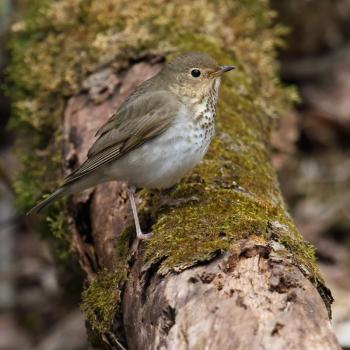 The spring peeper-like song of Swainson's thrush migrating overhead at night are a signature sound of fall in Maine. Photo by Cephas, courtesy of wikimedia commons
The spring peeper-like song of Swainson's thrush migrating overhead at night are a signature sound of fall in Maine. Photo by Cephas, courtesy of wikimedia commons
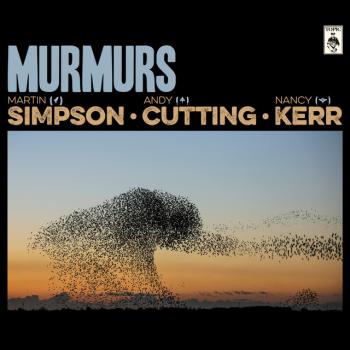 The authors recently discovered that one of their favorite musicians during their time in Ithaca, New York, is also a birder. Music legend Martin Simpson's song "Dark Swift and Bright Swallow" appears on his album, Murmurs, which depicts a murmuration of starlings on its cover.
The authors recently discovered that one of their favorite musicians during their time in Ithaca, New York, is also a birder. Music legend Martin Simpson's song "Dark Swift and Bright Swallow" appears on his album, Murmurs, which depicts a murmuration of starlings on its cover.
Cool mornings, earthy smells of fallen leaves, and those first high, thin clouds that are more common in winter—it’s late fall here in Maine.
On Friday nights, in the distance, from across the valley, we can hear the announcer on the loudspeakers at the local high school football games. Sometimes that’s the acoustic backdrop to the “peep” calls of Swainson’s thrushes and “seet” calls of white-throated sparrows echoing down from the night sky as the birds migrate south.
On a recent fall day, we were driving to a favorite spot to look for birds and listening to music on the way. A song came up on the radio that triggered a discussion and memories of some wonderful times when we lived in Ithaca, New York. You may know that Ithaca is home to Cornell University and the famous Cornell Lab of Ornithology. We went to graduate school at Cornell, and eventually, we found positions at the Cornell Lab of Ornithology. We ended up spending 16 years in Ithaca.
Ithaca and Cornell had an incredibly vibrant birding community when we were there. It still does, along with many great places for birding—and many birds that are not regularly found in Maine. We remember how exciting it was to see the Caspian terns roosting on the lighthouse jetty at Cayuga Lake. To watch cerulean warblers high up in the sycamores at Salmon Creek. To marvel at the awe-inspiring sight and sound of a million snow geese coming in to roost at the north end of the lake after foraging all day in the farm fields from miles around.
The birds and birding community were amazing!
But there were so many other things that inspired our love of Ithaca. For us, one of those features was an incredible abundance of musicians and bands who performed in an eclectic array of restaurants, coffeehouses, and pubs/bars. On any given weekend, you might have the option of hearing The Horse Flies performing at the Rongovian Embassy in Trumansburg, the floor bouncing as the audience was electrified by tunes like “Build a House and Burn It Down” and “Human Fly.” You never knew where you might hear banjoist and singer Richie Sterns (a member of the Horse Flies) performing solo or with various other musicians—banjo legend Tony Trishka, perhaps—doing his hard-driving “Reuben’s Train.” The Burns Sisters, who once toured with Arlo Guthrie, might be bringing their unique sibling blend of country-folk to the once-iconic but now long-gone Cabbagetown Café in Collegetown (thankfully, we still have our Cabbagetown Cookbook, well used beside cookbooks of that other Ithaca mainstay, Moosewood Restaurant, still thriving when we visited Ithaca a few years ago). If you kept your eyes and ears open you might hear experimental cellist Hank Roberts or Eric Aceto, an early innovator of the electric violin, blowing your mind with stringed instruments or modifications of their own creation.
There were so many more.
But one performer whose gigs we rarely missed was those of guitarist/stringed instrument genius and singer/songwriter Martin Simpson, whose contributions to the British folk-rock scene had brought him great renown years before we arrived in Ithaca. How he came to live in the Ithaca area while we were there we don’t know, but what a lucky break for us. This extraordinary musician-legend played regularly in tiny cafes and bars in and around Ithaca. Even as we showed up to his live performances back then, we knew we were incredibly fortunate.
Something else that was cool about Ithaca at the time was that many of these world-class players might be encountered as they worked in or hung around another famed local place, Ithaca Guitar Works. Once we when we were bringing in an old banjo for repair, Richie Stearns saw us on the street and asked us if we would sell him the banjo. Eric Aceto or Martin Simpson might be behind the counter, ready to answer your instrument questions or play something on a guitar you wanted to try out—it never sounded quite the way it did when their fingers were on the strings.
Martin Simpson moved away years before we left Ithaca, but we followed his musical work for a while when he moved to California and then back to England.
That brings us to when, a few days ago here in Maine, we were thinking about some of Simpson’s music on our way to a favorite birding site. Through the power of the internet we made a surprising discovery: Martin Simpson is a birder! We came across a few comments he’d made about birds and birding, and discovered that he’d made a guest appearance on a podcast in England in which he performs a few songs while birding at a favorite birding “patch.” It was while listening to the podcast that we learned of his delightful song called “Dark Swift and Bright Swallow,” which is spot-on in its depictions of the life history of these birds and what they mean to the people among who they live.
If you, too, enjoy the intersection of a love for birds and nature and arts and music and food and culture the way we do, you know how incredibly enriching these things are. We hope you’ll do some internet searching for some of the names we’ve mentioned to hear their music. Have fun!
Jeffrey V. Wells, Ph.D., is a Fellow of the Cornell Lab of Ornithology and Vice President of Boreal Conservation for National Audubon. Dr. Wells is one of the nation's leading bird experts and conservation biologists. He is a coauthor of the seminal “Birds of Maine” book and author of the “Birder’s Conservation Handbook.” His grandfather, the late John Chase, was a columnist for the Boothbay Register for many years. Allison Childs Wells, formerly of the Cornell Lab of Ornithology, is a senior director at the Natural Resources Council of Maine, a nonprofit membership organization working statewide to protect the nature of Maine. Both are widely published natural history writers and are the authors of the popular books, “Maine’s Favorite Birds” (Down East Books) and “Birds of Aruba, Bonaire, and Curaçao: A Site and Field Guide,” (Cornell University Press).

